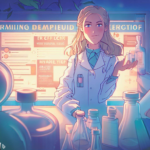In the realm of healthcare, the intricate processes of compounding and dispensing medications play vital roles in delivering tailored treatment solutions to patients. Both activities involve the preparation and provision of medications, yet they encompass distinct steps, purposes, and responsibilities. Let’s delve into the depths of compounding and dispensing, highlighting their key differences and showcasing the significance of each in the realm of patient care.

Distinguishing Manufacturing and Compounding
Manufacturing and compounding are integral to the medication supply chain, but they diverge in their scope and objectives. Manufacturing primarily revolves around large-scale production carried out by pharmaceutical companies. It involves the mass production of standardized medications, adhering to strict quality control and regulatory guidelines. In contrast, compounding entails the customized creation of medications on a smaller scale to meet specific patient needs. Compounded medications are often formulated when commercially available drugs cannot address unique patient requirements.
Deciphering Compounding and Dispensing
While compounding involves the creation of custom medications, dispensing focuses on the safe and accurate distribution of medications to patients. Pharmacists, who act as crucial intermediaries between healthcare providers and patients, play a pivotal role in the dispensing process. They translate prescriptions into tangible medications, provide vital counseling to patients, and ensure the proper usage of prescribed drugs. Compounding, on the other hand, takes place before dispensing and pertains to the preparation of specialized medications tailored to the patient’s specific needs.
Illustrating Drug Compounding
An illustrative example of drug compounding lies in the realm of dermatology. Imagine a patient requiring a medication to address a unique skin condition. Commercially available treatments may not offer the desired concentration, combination, or form of the medication. Here, compounding comes to the rescue. A pharmacist, following the healthcare provider’s prescription, can customize the formulation by adjusting the dosage, altering the form (such as turning a pill into a cream), or removing allergens. This process exemplifies the essence of compounding in tailoring treatments to individual patient requirements.
Exploring Compounding Products
Compounding extends beyond typical oral medications. It encompasses a diverse range of products, including topical creams, ointments, suppositories, oral solutions, and even sterile injectables. These products cater to a wide spectrum of medical needs, including pain management, hormone therapy, dermatology, pediatrics, and more. Compounded medications are formulated with precision, addressing nuances that commercial drugs may overlook.
To Note:
- Manufacturing involves mass production by pharmaceutical companies, while compounding creates customized medications for unique patient needs.
- Dispensing is the safe distribution of medications by pharmacists, while compounding is the preparation of personalized medications prior to dispensing.
- Compounding exemplified through dermatology showcases its role in tailoring treatments to individual patient requirements.
- Compounded products include diverse forms such as creams, suppositories, and sterile injectables, serving various medical needs.
In a world where patient-centric care and treatment personalization are paramount, the distinctions between compounding and dispensing medications underscore the significance of tailored healthcare solutions. As the healthcare landscape continues to evolve, the roles of compounding and dispensing remain pivotal, ensuring that patients receive treatments tailored to their unique needs.
Meta Description:
References:
- European Confederation of Pharmaceutical Entrepreneurs (2022). EUCOPE Paper on Compounding.
- European Commission (n.d.). How Can EU Legislation Enable and/or Disable Innovation?.
- How Cutting-Edge Technologies Are Transforming the Way We Approach Wellness
- How Innovation is Reshaping the Landscape of Pharmacy

